This article is based on a presentation given by Christina at our Customer Success Festival in Boston 2023.
Catch up on this presentation, and others, using our OnDemand service. For more exclusive content, visit your membership dashboard.
Mastering the art of multithreading in customer relationships is not just beneficial; it's imperative. This multifaceted strategy is about creating a web of connections that not only supports but also strengthens the customer journey.
I'm Christina Parra, Senior Manager: Head of Core Segment Customer Success at LinkedIn. My tenure has taught me the irreplaceable value of building robust relationships with various stakeholders.
In this article, I'll share with you:
- My customer success journey
- The essence of multithreading
- Strategies for high-quality conversations with key stakeholders
- Multithreading for improved customer retention
- Crafting a robust customer success plan with stakeholder engagement
Keep reading if you're in the market to learn practical tactics for embedding this approach into your client engagement practices, ensuring every customer interaction is rich with potential and purpose.
Christina’s customer success career journey
I've been with LinkedIn for seven years, but my journey with multithreading began even before that. My career started as a Customer Success Manager (CSM), back when the term was synonymous with an Account Manager. Initially, I worked on trading floors, a unique experience that allowed me to directly build relationships with key individuals—all conveniently located in one room.
However, the shift to software sales introduced me to a more challenging and digital-centric environment. I recall a pivotal moment when a seemingly secured deal fell through because the client went silent, and I had no other contacts to turn to. It was then that I began to leverage LinkedIn to establish multiple connections, a strategy that not only salvaged the deal but also eventually led me to join LinkedIn.
At LinkedIn, I've witnessed the platform's growth to nearly one billion users and have served in various roles—from managing a mid-market team to leading our implementation consultant team. Recently, I’ve been guiding our customer success team across SMB, mid-market, and enterprise segments, overseeing about 40 CSMs.
Given the ever-changing macro environment, multithreading has become an essential part of our strategy, enabling us to navigate through these changes effectively.
The data behind the importance of multithreading
Diving into the data we've gathered at LinkedIn, the importance of multithreading becomes crystal clear. As CSMs, our focus may differ—some zero in on upsells, others on churn or net retention—but the common denominator remains renewals.
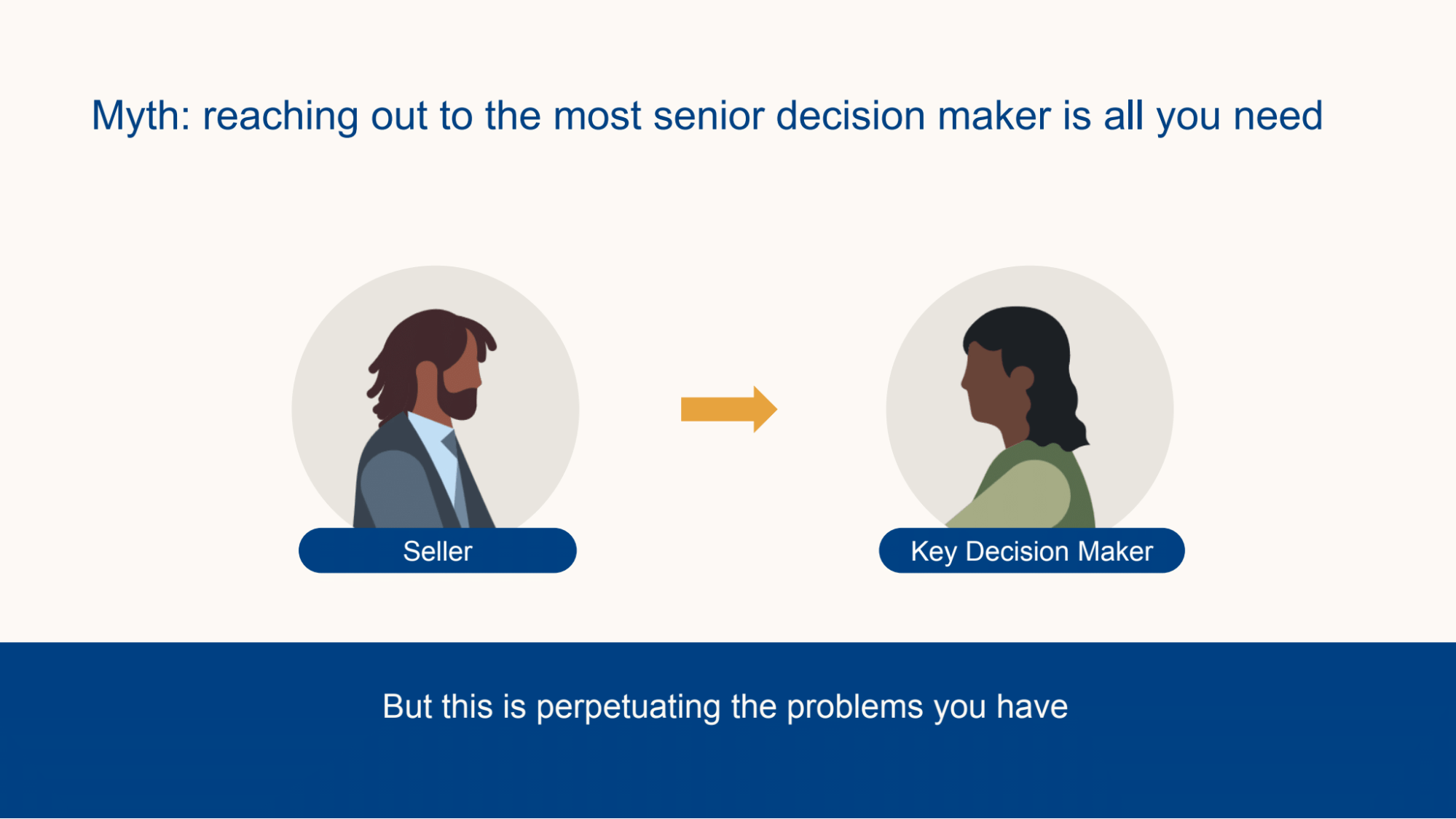
What we've observed is a tendency for connections to be established with just one decision-maker per account, which is no longer sufficient given the dynamic nature of the market.
The data reveals a compelling shift: on average, there are 11 decision-makers involved in a B2B buying decision.
It's fascinating to see the variety of roles these decision-makers play. Within any customer's internal decision-making process, whether they use frameworks like the RAPID model–which I highly recommend looking into–or others, the cast includes key decision-makers, influencers, champions, and leaders.
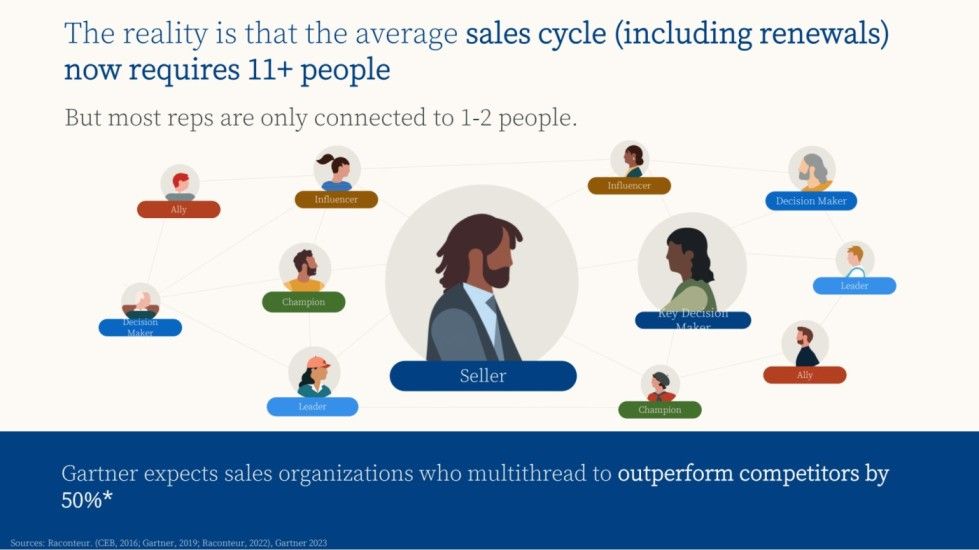
The “RAPID” acronym stands for Recommend, Agree, Perform, Influence, and Decide.
Each letter represents a pivotal role in the buying process. With the current economic fluctuations, every purchasing decision is under increased scrutiny, hence the heightened importance of multithreading.
It's not just about identifying who these individuals are, but also crafting the right approach to connect with them.
Now more than ever, it's vital we extensively engage across all levels of our customers’ organizational structure. This includes reaching out to our customers’ managers, their managers' managers, and even departmental entities like finance that are entering the fray of buying decisions. It's a complex web, but understanding and navigating it is essential for our success.
Strategies for high-quality conversations with key stakeholders
In my journey as a CSM, I've realized the power of warm introductions in fostering high-quality conversations with the people who matter.
A warm introduction can make a buyer four times more likely to reinvest in a renewal. This can sometimes be a nuanced task for CSMs, especially when leveraging existing relationships. It's about identifying the best pathway to each key person, whether through a leader at your company or other connections within the customer's organization.
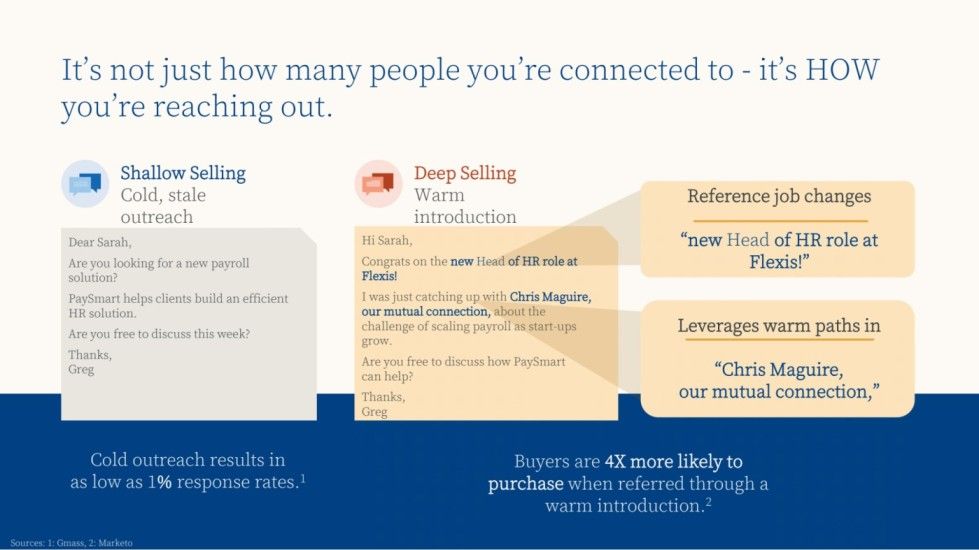
At LinkedIn, we advocate for what we call “deep selling”—it's about engaging with insights and understanding all potential warm pathways to a customer, as opposed to “shallow selling,” which involves cold outreach. The approach to reaching customers, especially when working on upsells, is critical. Our data uncovers some intriguing insights.
For instance, decision-makers who are new to a company are 62% more receptive to outreach and are often eager to implement change. It's crucial to monitor these job changes within the customer lifecycle for potential opportunities.
Additionally, the concept of “hidden allies” emerges as a powerful tool in multithreading. These individuals, akin to champions, may have had positive experiences with your solutions in the past and can now influence within new organizations they're part of.
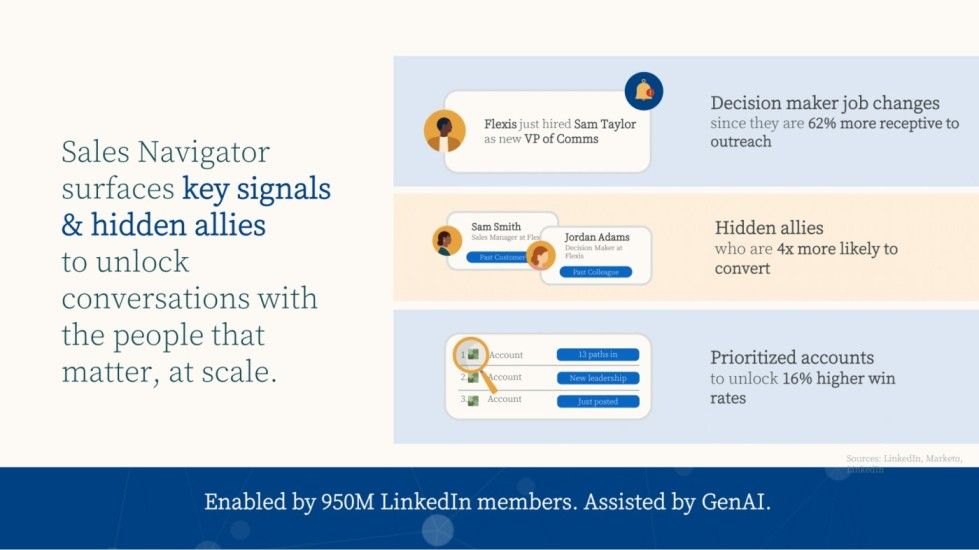
Identifying such allies, who can advocate for your value proposition, is invaluable. Tools like LinkedIn's Sales Navigator are instrumental in pinpointing these hidden allies, allowing you to weave a stronger narrative and establish a broad and influential network within your customer's organization.
Multithreading for improved customer retention
As I reflect on the vast LinkedIn network, nearly one billion strong, I'm reminded of the plethora of hidden allies within our customers' organizations—vital connections that help us reach the right decision-makers. This brings me to how we at LinkedIn not only promote multithreading but also embody this practice in our own operations.
At LinkedIn, we truly embody the affirmation “practice what you preach.” Our CS team, for instance, is primarily focused on driving customer retention. We've identified two critical behaviors to achieve this: one is uploading our book of business to stay updated on our customers, and the second is multithreading.
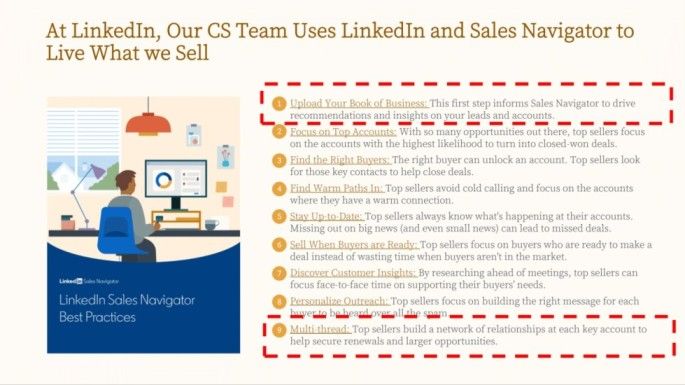
Multithreading might seem intangible at first—it's about relationships, after all. However, we've made it tangible and operational through defined Key Performance Indicators (KPIs) for each account.
With an average of 11 decision-makers in B2B buying decisions, we coach our teams to go beyond. We recommend connecting with a minimum of three people per customer and saving at least three others as leads in Sales Navigator. This approach allows us to build relationship maps, delineating decision-makers, evaluators and champions, and thereby crafting a strategic engagement plan.
KPIs are crucial in demystifying the “squishy” nature of relationship-building. By setting clear targets, we've seen a marked improvement in our depth of connection with customers.
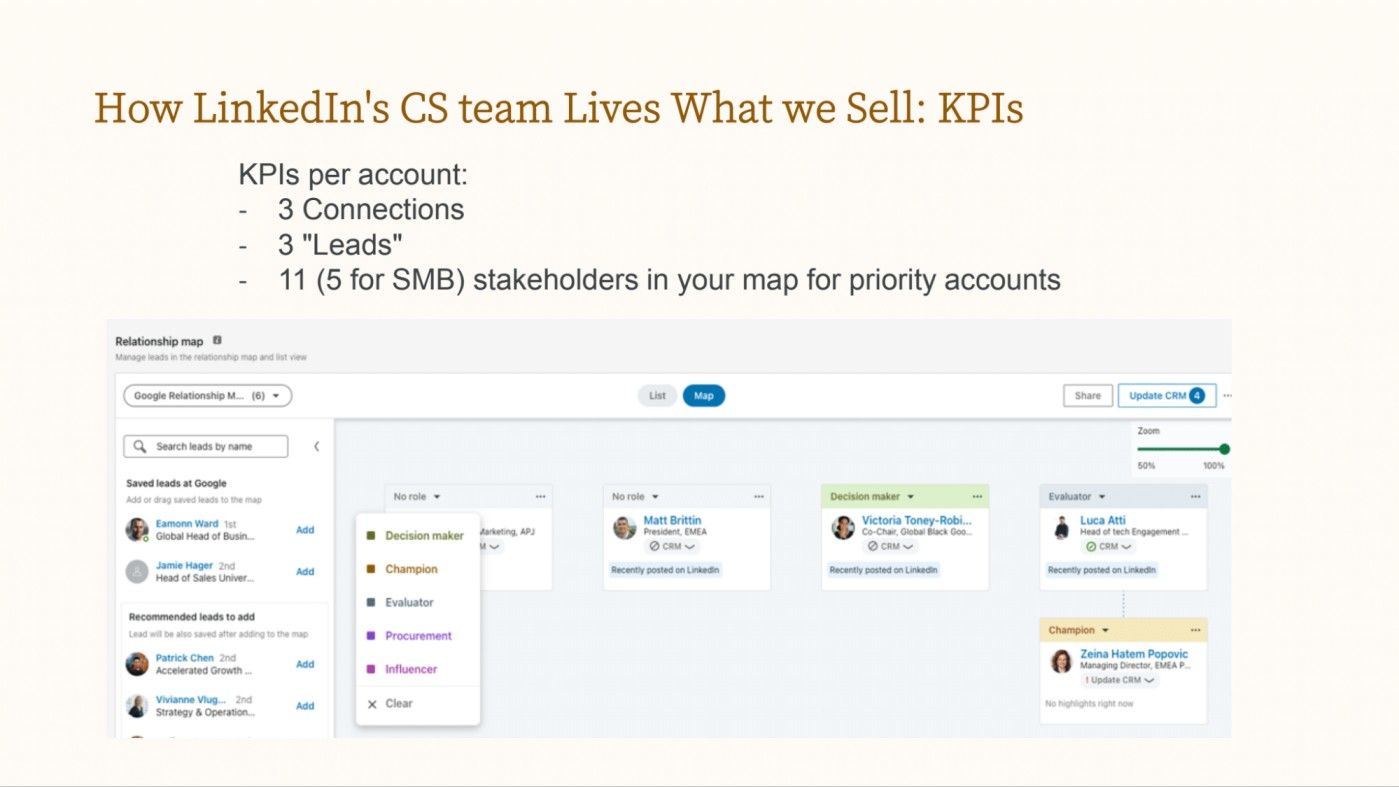
When it comes to where multithreading fits into the customer journey, our answer is simple: everywhere.
Each key customer moment is an opportunity for multithreading. However, it gains special prominence during customer success planning—or as it’s sometimes referred to, mutual success planning. This is where we sit down with the customer to outline business objectives, establish KPIs, and co-create a plan ensuring value is continuously delivered.
Finally, we emphasize building a governance model with the customer.
I advise my CSMs to pre-populate who they believe should be involved in the success of the program. Including management and executive sponsorship is critical because many change initiatives falter without their involvement. The decision-makers are not just figures in the hierarchy; they are instrumental to the success of any program.
Crafting a robust customer success plan with stakeholder engagement
In my work, a pivotal tool has been our program stakeholders' slide within the customer success plan. This slide delineates six distinct roles, often with multiple customer stakeholders filling each category. Our process involves validating these roles and securing agreement on stakeholder involvement during the customer success planning conversations.
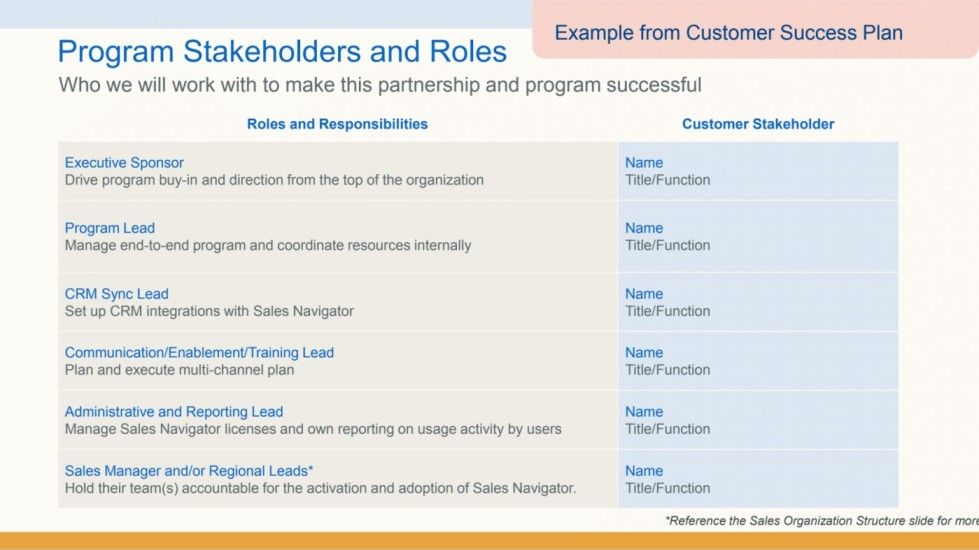
Annually, we embark on customer success planning in the first 90 days, followed by a mid-year check-in and a strategic value review. These steps ensure the program team is aligned and that the stakeholders are engaged, not just in decision-making, but also in driving program buy-in from the top down.
What this thorough planning facilitates is the identification of potential risks. It’s not uncommon for a customer to assign a single individual as the owner of a tool, but our approach illustrates the necessity of broader involvement.
If there are any blanks on the stakeholders slide, it’s a red flag, signaling that we're missing key players. This visibility allows us, as CSMs, to adopt a consultative stance, helping customers recognize gaps and advising them on how to fill these effectively.
A well-executed customer success plan, with comprehensive stakeholder engagement, can make a world of difference. It's about creating a collaborative environment where every necessary role is filled, ensuring that the program's direction is not only clear but also widely supported across the organization.
Did you enjoy this article?
As we mentioned at the start of this article, this piece was transcribed from a presentation Christina gave at our Customer Success Festival Boston in October 2023.
If Christina's article sparked joy (Marie Kondo fans unite!), or gave you some food for thought, why not experience the real deal in real-time and attend one of our Customer Success Festivals – either in-person or virtually?
Whether you’re tackling customer onboarding, churn reduction, or renewals, rest assured, you’ll leave our festival rejuvenated and ready to return to work to apply your findings.




 Follow us on LinkedIn
Follow us on LinkedIn



